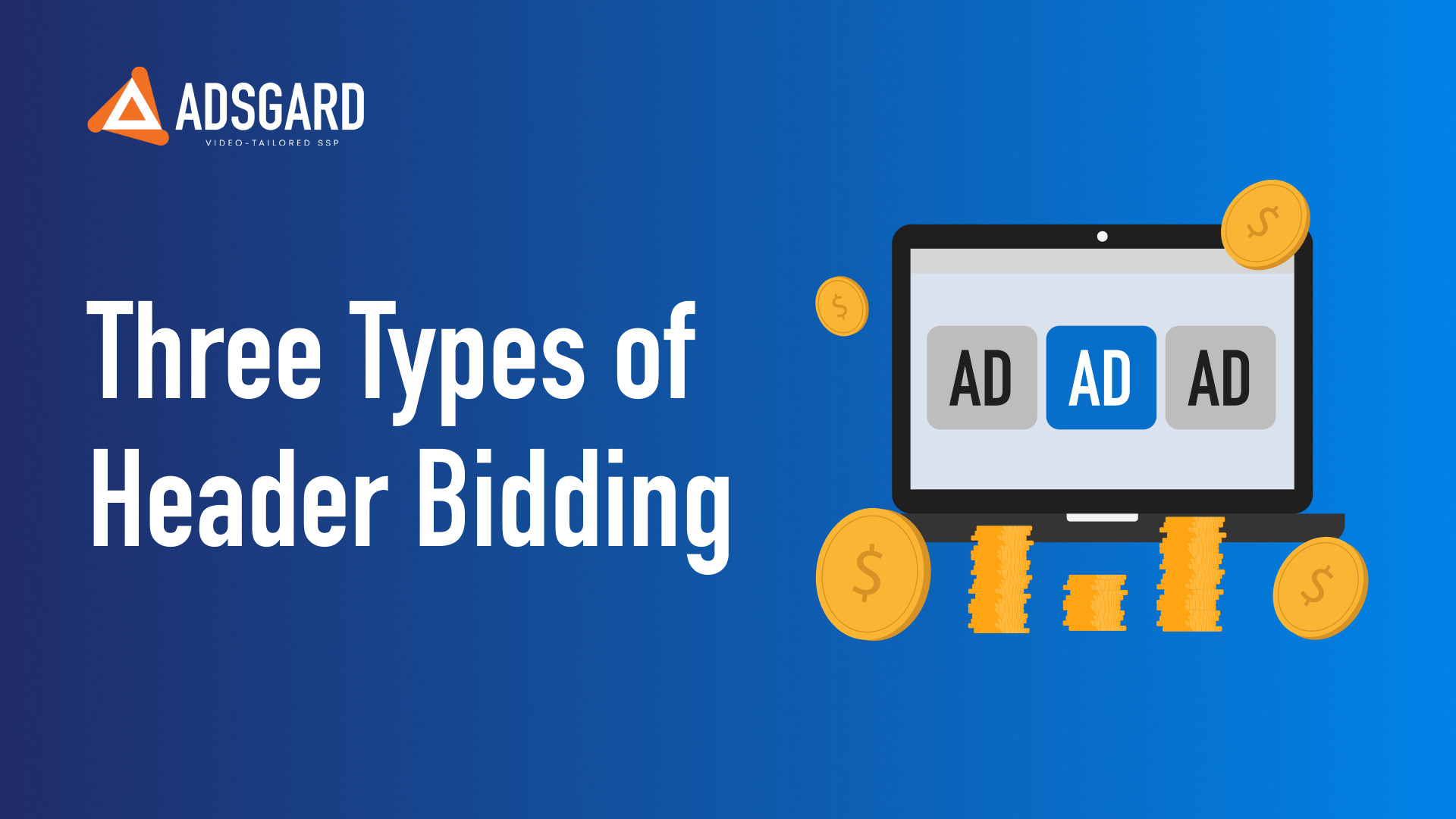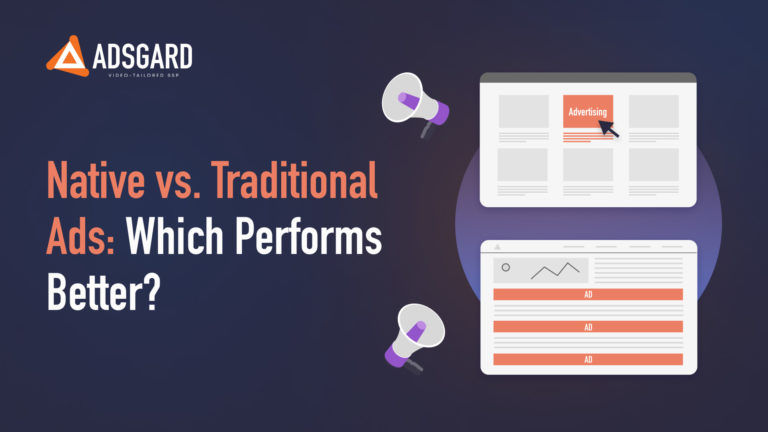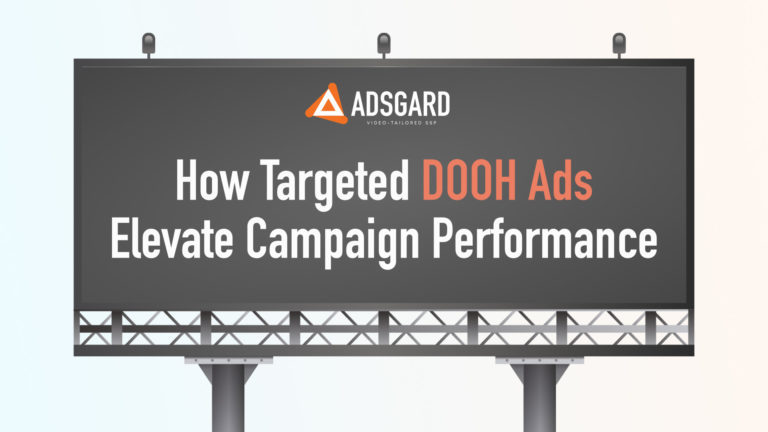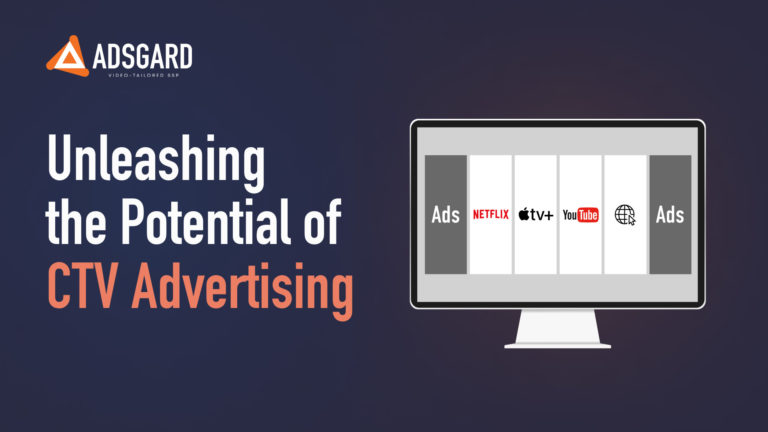
Header bidding is a programmatic auction where bid requests are promptly distributed to numerous demand partners simultaneously. This process ensures that each ad impression can be acquired at its highest possible worth, considering the existing demand.
Header bidding emerged as a solution to the limitations of the traditional waterfall model used in programmatic advertising auctions. This approach was introduced as an alternative and allowed publishers to offer their inventory to multiple advertisers simultaneously, typically through a JavaScript code snippet placed in the header section of a web page. This code triggers the simultaneous auction of the ad inventory across multiple demand sources before the page content is loaded, hence the name header bidding.
Header bidding emerged in the ad tech industry around 2014, gaining significant traction by 2015. At first, people knew it by names like tagless, pre-bidding, complete bidding, and parallel auction. In June 2018, the term “header bidding” was solidified with an article, and from then on, it became an established concept.
Since its inception, header bidding has evolved, and various header bidding solutions and frameworks have emerged. Prebid is the leading header bidding solution, offering complete openness and accessibility to all publishers interested in integrating header bidding at no cost. Additionally, it operates as a fully open-source platform. Ever since the introduction, the range of Prebid products has expanded significantly. Among the notable offerings are Prebid.js, Prebid Server, Prebid Mobile, and SharedID. This growing lineup showcases the evolution and diversification of the Prebid product family.
The Advantages of Utilizing Header Bidding
Header bidding empowers publishers to maximize their demand, gain better control over their auctions, and minimize discrepancies in the advertising ecosystem.
- Increased demand to its maximum potential. Header bidding enables publishers to connect with multiple demand partners, including DSPs and advertisers. This creates increased competition for ad inventory and generates higher revenue;
- Open and clear exchange. Despite its complex supply chain, header bidding simplifies the process for publishers. They can easily track which demand partner purchased specific inventory through bid-level data. Additionally, many wrappers offer advanced reporting and analytics for publishers to monitor their earnings and performance;
- Enhanced control. Publishers have the flexibility to configure the auction according to their preferences. This includes adjusting the floor price, setting timeouts, and managing demand partners to balance ad revenue and page latency;
- Smallest possible difference. By organizing auctions on the publisher’s platform through a wrapper, header bidding allows publishers to track transactions more effectively. Running simultaneous auctions reduces differences by minimizing the number of components involved.
Exploration of the Varieties of Header Bidding
There are three types of header bidding implementations: client-side, server-side, and hybrid.
In client-side header bidding, the auction occurs within the user’s browser. When a user visits a webpage, the publisher’s ad tags in the page’s header request bids from multiple demand partners. The demand partners submit their bids, and the highest bid wins the auction. This type of header bidding is implemented using JavaScript and requires the browser to handle the auction process.
Server-side header bidding moves the auction process from the user’s browser to an external server. When a user visits a webpage, the publisher’s ad server sends bid requests to multiple demand partners or supply-side platforms via a server-to-server connection. The demand partners submit their bids to the server, which conducts the auction and returns the winning bid to the user’s browser. Server-side header bidding can reduce latency and improve page load times compared to client-side bidding.
Hybrid header bidding combines elements of both client-side and server-side implementations. This approach sends the initial bid requests to demand partners and an external server. The server-side component conducts the auction, and the winning bid is returned to the user’s browser for final rendering. Hybrid header bidding aims to leverage the benefits of client-side and server-side techniques, balancing speed and auction efficiency.
Header bidding has gained popularity due to its ability to increase competition, transparency, and revenue potential for publishers. However, the choice between waterfall and header bidding depends on various factors, such as the publisher’s specific needs, available technology, and the ad ecosystem they operate in.
Summary
The most important thing you need to know is that Adsgard is an official Prebid distributor. This technology has proven its effectiveness and excellence to date. Header bidding emerged as an alternative to the traditional waterfall model, allowing publishers to simultaneously offer their inventory to multiple ad exchanges. By triggering a simultaneous auction in various demand sources before page content is loaded, header bidding maximizes the worth of each ad impression.
The advantages of header bidding include: increased demand potential, open and transparent exchange, enhanced control for publishers, and minimized discrepancies in the advertising ecosystem. It is worth mentioning that header bidding has different types of implementations: client-side, server-side, and hybrid. Additionally, a comparison between header bidding and the waterfall model highlights the increased competition, transparency, control, and revenue potential header bidding offers. The selection of either method relies on the particular requirements of publishers and the advertising environment in which they function.



